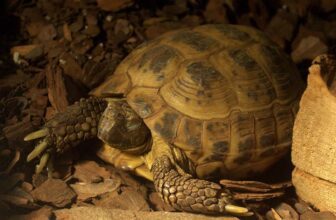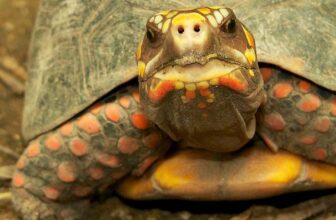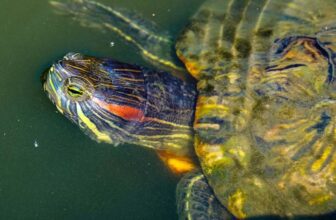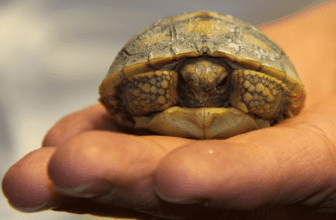The red-eared slider is one of the most popular, interesting, fun, and unique turtle pets in the world. The sheet cuteness factor of a baby red-eared slider, who starts life at about the size of a quarter, is enough to melt one’s heart immediately making them want to own this little creature as a pet. But before doing so, it is important to understand and consider their dietary and general care needs.
This turtle species is available for sale in the United States, but acquiring a baby red-eared slider as a pet would not be easy since the US has laws against the sale and purchase of turtles under four inches in length. But, if you really want to adopt a baby red-eared slider as a pet in your home, and want to find out the necessary husbandry and dietary tips, as well as how to find a good breeder, keep reading.
Baby Red Eared Sliders Buyer’s Guide
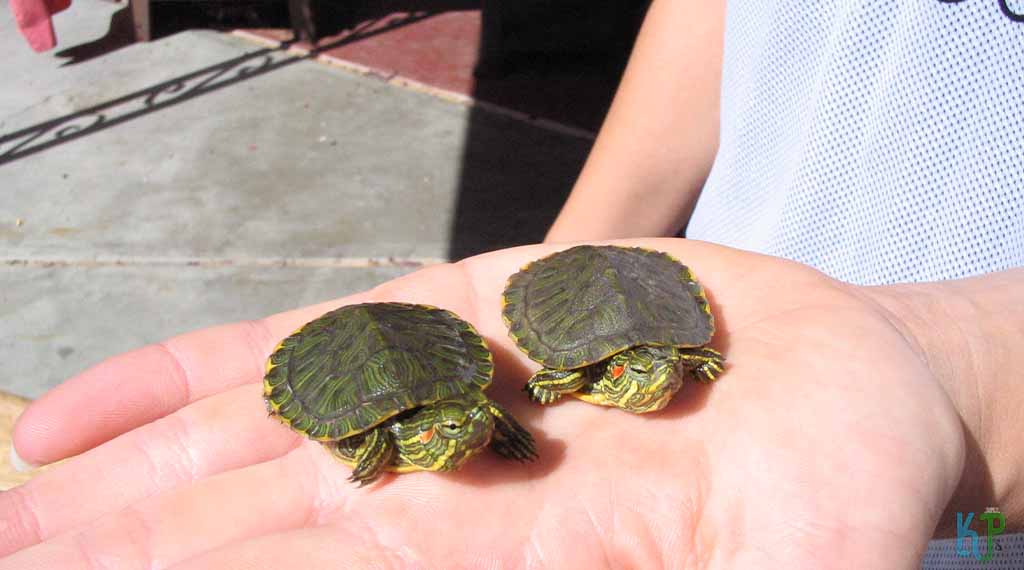
Many private online breeders, as well as numerous reptile expos, offer baby red-eared sliders for sale, but they sometimes land in the homes of irresponsible owners who eventually release them into the wild. Since red-eared sliders are considered to be an invasive species in many states, this move has a negative impact on the creature and the ecosystem it wanders into.
If the baby red-eared slider is not invasive in your area, we would recommend not taking them from the wild if they are found. Not only will they not survive long as a pet, but they also carry multiple diseases, including parasites.
If you are intending to get one, you will want to look for an excellently reviewed breeder who possesses a high level of knowledge and raise the red-eared sliders in a high standard of husbandry. Breeders who are well-rated, open to questions, transparent to inquiries, and willing to communicate are the best option. It is recommended that multiple dealers be looked up before the breeder selection is made.
If a breeder is offering to sell a baby red-eared slider under four inches in length, that is a surefire way to identify an irresponsible breeder. The reputable ones will abide by laws on the books in the US since 1975 that prohibit the sale of baby turtles under 4 inches in length. When you purchase a healthy baby turtle, it is far more likely to grow into a healthy adult.
Another key factor is deciding what type of slider you are interested in. The most common is the wild type and those sell for anywhere between $30 and $40 by private breeders. The variations of morphs include albino, ghost, pastel, leucistic, piebald, etc. There are other, rarer morphs, such as charcoal and caramel, but the price point on those exceeds $1,000.
Why Is The Sale And Purchase Of Baby Red-Eared Sliders Illegal?
The FDA (Food and Drug Administration) made the sale of small turtles under 4 inches in length illegal because these tiny reptiles increased the risk of the human owner contracting salmonella. Because of the adorable, small nature of the red-eared slider turtle, people, especially children, are more prone to handle it without washing their hands or even kissing it, leading to salmonella infections.
The carrying of salmonella isn’t exclusive to baby turtles, as most turtles of other ages also carry the bacteria on their bodies. There are no easily identifiable signs that indicate if an individual turtle has the potential to make one sick, so it is important to wash hands after handling the animal, as well as any of the decors that it could have come in contact with in its tank.
The Habitat Of A Red-Eared Slider Turtle
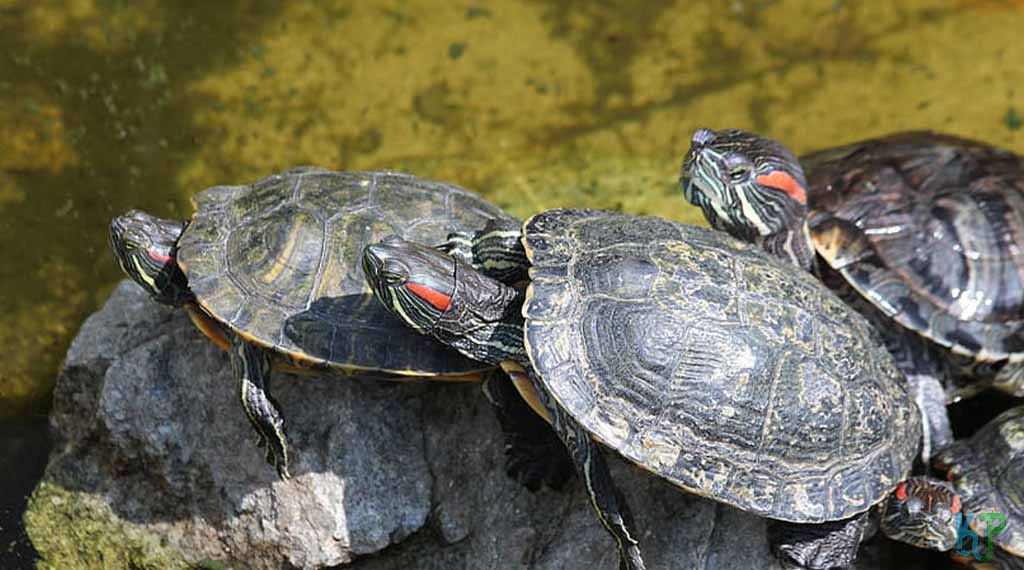
In order to lead content and healthy lives, red-eared slider turtles need a safe and accommodating habitat. Before becoming an owner, it is important to ensure that you can provide such a living environment for them. The following are essential requirements for the pet owners of a red-eared slider.
- Clean Water: Baby and juvenile red-eared sliders need clean water to drink and swim around in. The water provided to their tank should be circulated through an aquarium pump and tested at least once a week for ammonia, as well as the acceptable range of nitrate and nitrite levels.
- Stress-Free Surrounding: Even in an ideal set-up tank, there are still matters of stress to attend to. If the tank is too busy or too noisy, the red-eared slider can become stressed. Therefore, the turtle’s enclosure should be placed in a quiet, calm part of the home. It should be out of the reach of other pets and young children. If the slider is stressed, he will spend most of the time in hiding. If it feels safe in its environment, it will explore, bask, and swim around, leading to emotional health.
- Temperature Control: Sudden temperature changes can have severe negative effects on a baby red-eared slider. When temperatures drop too suddenly, they can develop pneumonia. The tank should be able to hold temperatures in a normal, steady range within levels necessary by the animal.
- Omnivorous Diet: Baby red-eared sliders will consume everything from plants to earthworms, crustaceans, snails, tadpoles, moths, and even certain small animals. In the wild, the red-eared slider will eat a variety of things, so it is expected that they will not be limited to just one type of prey in the tank either. A diet with a variety of options keeps them mentally and nutritionally enriched, allowing them to acquire an array of essential vitamins.
- Lack Of Company: While red-eared sliders can cohabitate with other creatures, it is important to understand that these combinations can lead to challenges. For instance, while they can share a tank with fish, cleaning this tank to keep both the turtle and the fish clean becomes tough. When the animal is young, nothing larger than a guppy should be kept alongside it in the tank. First-time pet owners are generally advised to let the red-eared slider live on its own.
Setting Up The Red-Eared Slider Tank
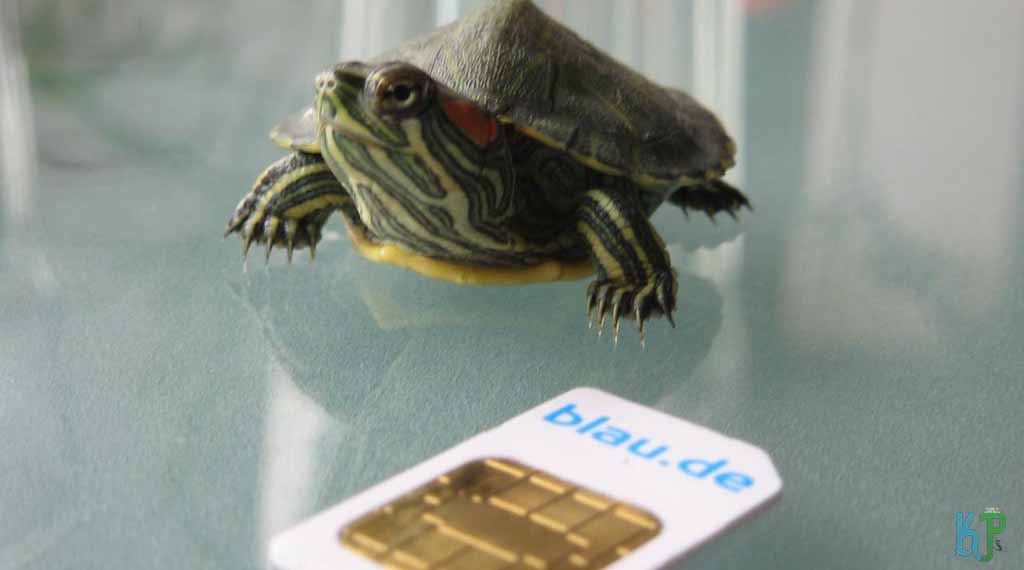
There are many considerations to keep in mind when setting up your red-eared slider’s tank. The general rule of thumb for tank size is to permit 10 gallons of space for every inch of the turtle’s length. That means that an adult red-eared slider tank can be up to 120 gallons in volume.
The turtles also grow quickly, so getting a smaller tank is impractical since they will outgrow the necessary size, requiring a tank upgrade. This will mean extra, unnecessary expenses. While, admittingly, keeping a baby red-eared slider in a 100+ gallon tank will look odd, as the turtle quickly grows, it will grow into the tank’s size by proportion.
The red-eared slider also requires clean water that is verified to be free of chemicals for swimming. The tank should be filled with water to a depth equivalent to about twice the size of the baby’s shell. Don’t worry, they won’t drown. They are instinctually excellent swimmers from birth. While they love their daily swims, the red-eared sliders must also dry out by basking. Therefore, their terrarium will need to have space for land area. It should not exceed a third of the tank surface, making it not overwhelming but enough for your turtle to move around on.
Another important consideration is the tank’s lighting. Keep in mind that in the wild red eared sliders bask directly in the sunlight in the wild. However, placing the tanks in direct sunlight is not something that should be ever done for this purpose. Instead, lighting should be used to simulate the sun, in the form of fluorescent bulbs.
To stay active and healthy, turtles require both UVA and UVB lighting, so the tank should cast plenty of UV light that is suspended securely about 2 feet (24 inches) over the turtle’s basking platform, and not obstructed by a pane of glass of plastic which will filter the essential UV out.
The basking spot will also need to be warm, necessitating a heat bulb. It could either be a heat lamp or a ceramic heater. As long as the basking spot can warm up, it should work regardless of the heating choice. The ideal ambient temperature for a red-eared slider is in the 75 F to 85 F range, and the same goes for water, which should be monitored with air thermometers near the surface. The basking spot should be warmer, being in the range of 90 F to 95 F.
Some owners notice that their red-eared slider babies are not basking in their basking spot. There are two reasons why this could happen: the turtle cannot reach the basking area or the air/water temperatures are incorrect. Therefore it is important to set up a gently sloping ramp leading from the water to the basking spot.
The basking platform itself needs to be dry and stable. These factors make it easily accessible for the small animal to reach without much effort. If the temperatures of the basking spots are too low, the animal will likely not utilize the basking area either. The same is true if the temperature of the water is too warm.
Keep your aquatic turtle healthy and happy with the Tetra Aquatic Turtle Deluxe Kit – a 20 gallon aquarium with filter and heating lamps.
Caring For A Baby Red-Eared Slider Turtle
Young red-eared sliders are more prone to illness since their immune system is still in development, so caring for a baby red-eared slider requires more attentiveness than caring for an adult, who is hardier.
Regardless of age, a red-eared slider will need a large, warm tank with both water and land areas, as well as a plant and meat-based diet with a variety being available to them. Due to their susceptibility to illness, a baby slider will require more narrow temperature ranges, a clean tank, and more frequent meals.
Many owners find it helpful to create a care schedule for their red-eared slider that allows them to stick to feeding, temperature checking, cleaning, and water quality monitoring routines. This helps to reduce the stress of caring for the young slider and adjusts both the owner and the turtle to a stable routine.
Above all, cleanliness of the environment is essential to promoting the baby slider’s health. This is particularly important because these animals create waste that won’t clean itself, and they do so mostly in the area where they swim. If not adequately cleaned, the dirty water increases the risk of infections and illness and could lead to sudden death. Even if the water looks visually clear, it might still be high in nitrates and ammonia from decaying waste and food.
Keeping their tank clean involves scooping up any visible waste and uneaten food daily, then using a gravel vacuum to suction out 25% of the tank’s water weekly. The water should be replaced with water that is fresh and treated for chemicals. The new water should be tested for nitrate, nitrite, and ammonia levels, with the latter pair needing to be at 0, while nitrates can have a nominal amount (40 parts or lower).
Not performing cleanings and proper maintenance will cause baby red-eared sliders to develop infections quickly. Also, it is important to monitor your turtle for injuries or any abnormal behaviors. Their small size could make injuries difficult to spot, so it’s best to look for some common signs of ill health including patches on the animal’s shell, lethargic disposition, loose droppings, dull shell, dull eyes, or lack of appetite.
The behaviors can be compared only to those that are normal to a turtle, so it is important to observe the turtle’s regular behaviors to have something to compare it to. By detecting differences, you can more readily attend to your turtle’s husbandry and health issues should they come up.
Before bringing a baby red-eared slider home, it is advised that the tank is fully set up, and has been operational for about a month to make sure that you know the routine for maintenance and temperature control well in hand, as well as an ideal filtration.
The Diet Of A Baby Red-Eared Slider
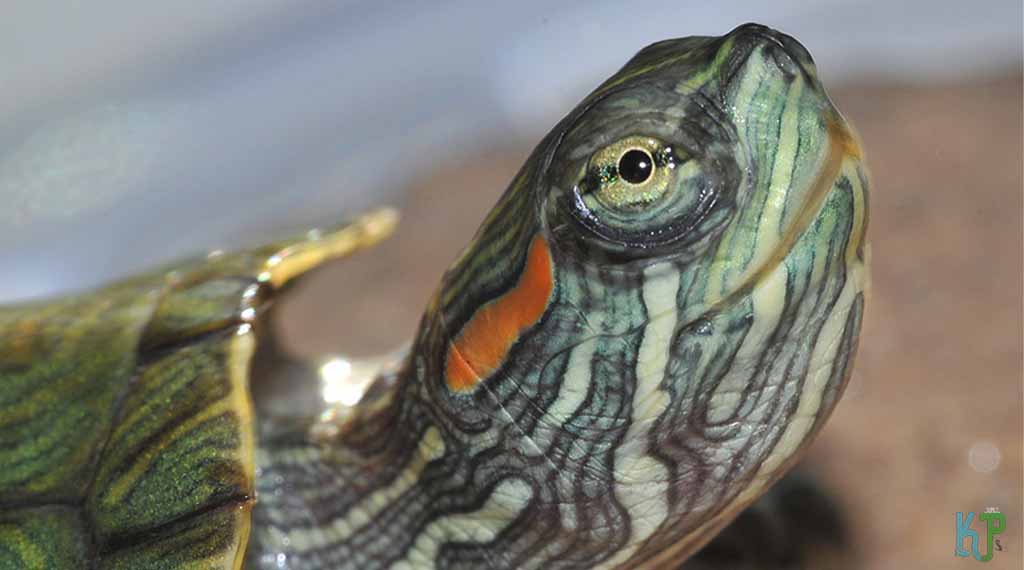
While baby red-eared sliders and adult ones eat the same type of food, the proportions differ, and the ratio of meats to plants is also distinct. Babies eat quite a bit and should be fed every day, but while adult red-eared sliders consume about half and half plants to meat, babies and juveniles generally eat about 30% plants and 70% meats.
A quarter of the red-eared slider’s diet should be in the form of commercial turtle food pellets, while the rest needs to be from either pre-killed or live animal prey. When serving your turtle plant-based foods, make sure to avoid water-based vegetables like iceberg lettuce, cucumbers, and celery, as they all have nominal nutritional value.
The food that should be provided for a baby red-eared slider should be high in nutrients, protein, and variety. The turtle should not be fed the same food daily, but rather a rotation of foods throughout the week. This will not only enrich the array of necessary nutrients and vitamins but will also create a diverse palette so the animal does not get bored.
This may surprise you, but baby sliders need larger portions than adults because they need the nutrients to grow. The portions they need should be the size of their heads. So for a four-inch turtle, the size should be about a full tablespoon. Until the turtle reaches six months, it needs to eat daily. After that milestone, it can be fed every other day.
The food should be cut up into small bite-sized pieces to prevent the animal from choking. A good measurement gauge is to give the turtle pieces that are smaller or equal to the distance between the animal’s eyes.
Feeding the red-eared sliders is simple. They prefer to feed while in water, so simply drop the pellets and food into the tank, but not into their basking area. Some owners actually move the turtle to a separate tank during feedings to avoid getting the animal’s main habitat dirty.
Keep your aquatic turtles healthy and nourished with Tetra ReptoMin Floating Food Sticks – a high-quality turtle food.
Why A Red-Eared Slider Is Not Eating?
Some owners grow concerned when their red-eared slider turtle refuses food. Actually, it is not unusual for them to refuse food in the first three days, due to the stress they are experiencing being introduced into a brand-new environment. Most red-eared sliders start eating after four days.
However, if the slider turtle continues to not eat after an entire week, you should first make sure that your tank setup is correct. That means verifying that the water is clean, the lights are toggled at a consistent schedule, the tank is in a safe and quiet area, and the temperature is within the comfortable range for the turtle. If all of those aspects are in a good place, then you need to consider that the slider may not like the food you are providing it. You can attempt to stimulate the animal’s appetite by feeding it small pieces of beef heart or cooked chicken.
What Gender Is My Turtle?
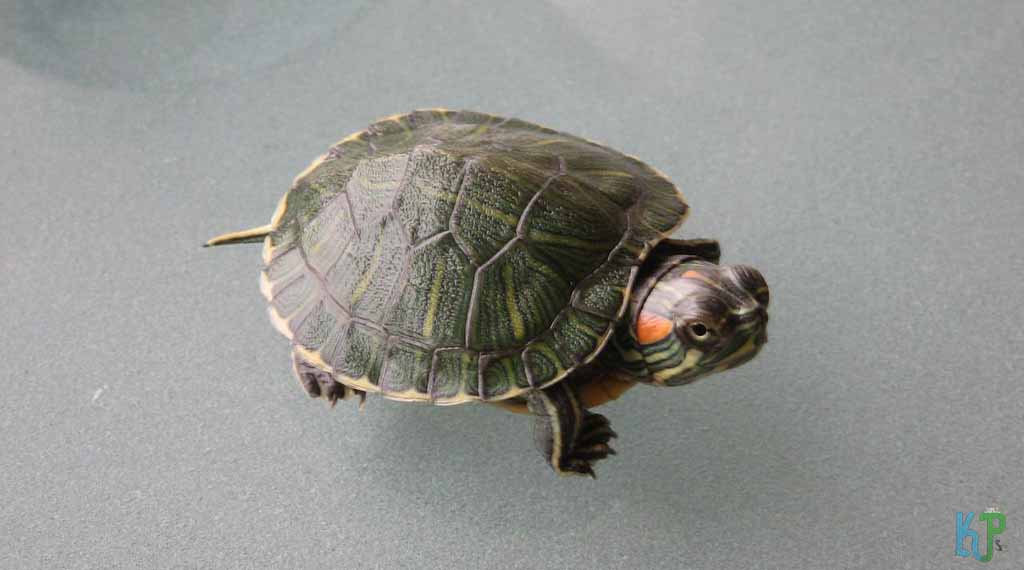
It can be very challenging to determine the gender of a very young turtle. This is generally more important to breeders than typical owners, but if one is curious as to the turtle’s sex, you can use a few helpful hints to clue yourself in:
- The bottom of a female’s shell (plastrons) is flat, while males are curved toward the spine (concave)
- The female’s vent is closer to the shell’s edge, while a male’s vent is further down the tale, located away from its body
- Males sliders have longer and thicker tails than females
- Male sliders grow far longer claws, which are used during mating season to attract a female by waving them at her face.
As the turtle ages, the differences between males and females become more discernable. At two years old, male sliders will mature and have all the expected maile features. Females do not mature until they are around five years old.
Your best bet, however, is to simply ask the breeder you are purchasing the animal from about its gender. They know this by controlling the temperature at which eggs were incubated, as that is the determining factor. Eggs that are incubated at 88 F will typically hatch as females, while those incubated at 79 F will be males. Those incubated between those two ranges could come out as either gender, however.
Handling The Red-Eared Slider
As noted earlier, it is not recommended that the red-eared slider be handled. It should only be done when absolutely necessary. Turtles stress easily, especially since they are not adapted to being held. If you do handle one, it is best to hold a baby with your thumb and index finger in a light pinch style, with the thumb at the turtle’s bottom and your hand on the side of the turtle for security. Never apply pressure or squeeze the animal when handling. If you are holding the red-eared sliders, make sure you don’t do so for over a maximum of five minutes.
Raising Baby Red Eared Sliders Conclusion:
There is no disputing that red-eared sliders make some of the cutest pets. Just remember that it needs to be at least 4 inches in length before it is purchased as buying smaller ones is illegal. Keep in mind that they are sensitive to water temperature and quality and can get sick easily, so make sure the tank is maintained in a pristine manner.
Their ideal temperature ranges are between 75 F and 85 F of ambient air and water, with the basking area between 90 and 95 F degrees. From a nutritional standpoint, red-eared sliders need to have a protein-rich, but varied diet. The food offerings should be rotated frequently and the portions need to be the size of their heads.
Red-eared sliders who are well taken care of can live for decades so we hope you take care of them well once they come to join your home.
If you’re a new owner of a baby red-eared slider, you want to make sure you give your pet the best start in life. Our article on 8 Tips for Feeding and Caring for Baby Red-Eared Sliders will give you all the information you need to ensure your little shelled friend thrives. From dietary recommendations to tank set-up tips, this article covers everything you need to know.
Frequently asked questions:
What do baby red eared sliders eat?
Baby red-eared sliders are omnivores and require a balanced diet of both animal and plant matter. They can be fed commercial turtle pellets, small insects, and aquatic plants such as water lettuce and duckweed.
What to feed baby red eared sliders?
Baby red-eared sliders should be fed a balanced diet of commercial turtle pellets, small insects, and aquatic plants such as water lettuce and duckweed.
What can baby red eared sliders eat?
Baby red-eared sliders are omnivores and can eat a variety of foods, including commercial turtle pellets, small insects, and aquatic plants such as water lettuce and duckweed.



